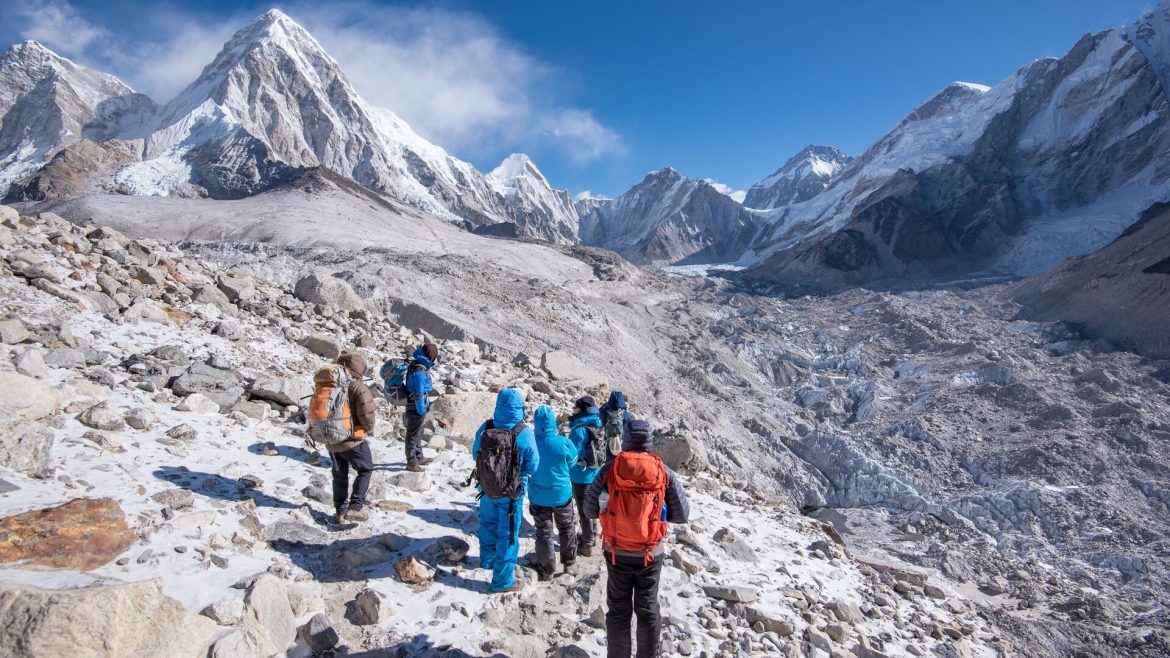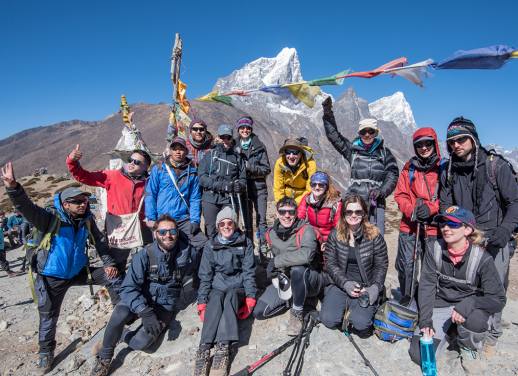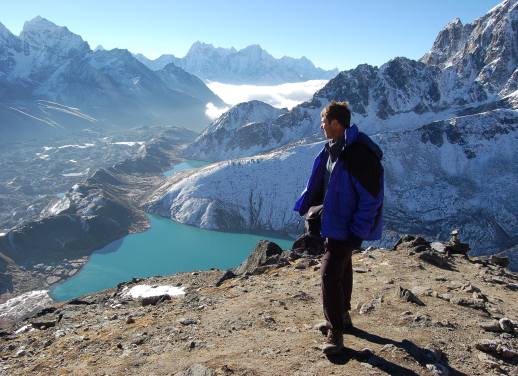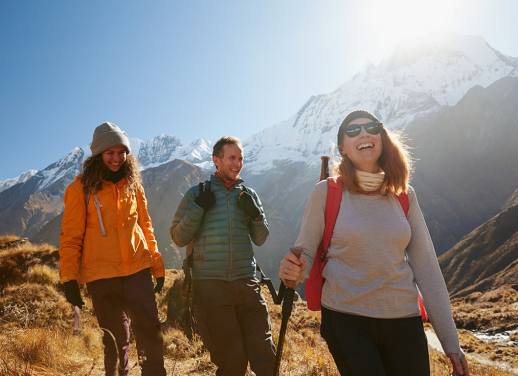After a series of setbacks, Parbati Joshi defied the odds to become the first female Intrepid leader to summit the world’s tallest peak. This is her story.
Few places capture the imagination of adrenaline seekers, endurance athletes and adventurers quite like the world’s tallest mountain. Growing up in the small Himalayan village of Goljungbesi, surrounded by the white-capped peaks and rolling hills of the remote Nepalese district of Rasuwa, Parbati Joshi shared their fascination with the summits.
At school, she read about Pasang Lhamu Sherpa, the first Nepali woman to summit Everest, and imagined ‘how cool it would be to stand on top of the world.’ But at the time, it felt like an impossible dream.
It was only after high school, when Parbati moved to Kathmandu, that she discovered trekking. ‘I realised it could be more than just adventure – it could be a profession,’ she says. But breaking into tourism wasn’t easy. Coming from a village where Nepali isn’t spoken fluently, Parbati soon found that language skills were one of her biggest barriers.
There was also pressure from relatives to get married – a reminder of the traditional roles expected of women in Nepal. While guiding was a lucrative career, it was still widely regarded as men’s work. ‘Even after more than a decade in this field, that stigma hasn’t gone away,’ she says.


Following in the footsteps of a childhood hero
By 2012, Parbati had started to find her footing in the mountains. By chance, while taking part in a wilderness first-responder course, Parbati met two local Intrepid leaders working in Nepal who encouraged her to join them.
During the course, she learnt more about how they guide thousands of climbers on treks to Everest Base Camp (EBC) for a glimpse of the main peak. ‘However, Intrepid is an international company, they lead [people from all over the world],’ she explains. ‘My English was so poor [at the time]. I didn’t feel capable yet.’
In order to improve her language skills and nurture a passion for guiding, Parbati first joined a local adventure company as an intern and later as a porter. She also trained in climbing, cycling and First Aid, sometimes stepping in as a responder.
In 2016, Parbati finally joined Intrepid as an assistant mountain guide, accompanying travellers on the Annapurna Circuit, Langtang Valley and Everest Base Camp.
For Base Camp trekkers, the journey ends at the foot of the Khumbu Icefall, a 600-metre vertical maze of collapsing towers and hidden chasms, echoing with the groans of shifting ice. But for those with the summit in their sights, it’s the treacherous launch pad towards their final ascent.
Intrepid travellers would often ask her if she was ever planning on doing the summit. ‘That was when the spark [to climb Everest] first came to me… I would repeatedly say: “one day I will”.’
Read more: The female leader challenging gender norms in Nepal
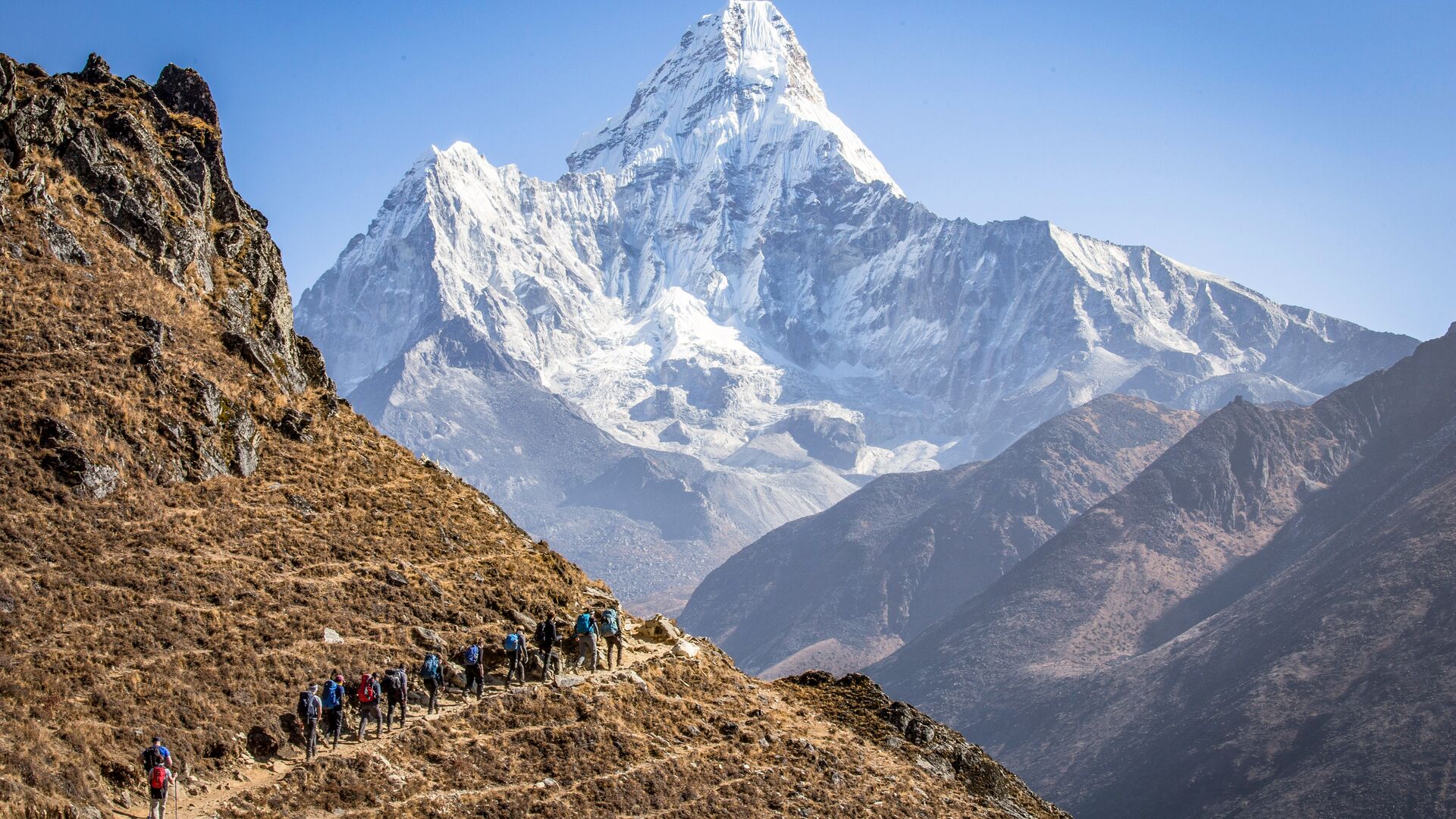
Overcoming the unexpected
Parbati had always planned to become a mountain leader with advanced high-altitude training, but in 2017, she had to undergo sudden surgery.
Forced to pause, she watched her peers move forward. It was not only a physical setback, but a financial one too, with the surgery costing her the money she’d saved up for her dreamed-of Everest expedition. ‘I cried a lot, but I also made myself a promise that one day, I’d be up there too.’
After recovering from surgery, Parbati rebuilt her strength by focusing on indoor climbing and hiking. ‘While recovery was challenging, it made me more determined.’
By 2019, she was ready for an advanced mountaineering course, but the pandemic soon put her Everest dream on hold again. As tourism ground to a halt, she returned to her village and spent ten months with her parents, wrestling with doubt over whether the mountains were the right place for her to work.
But the pull of the peaks never let her go. For Parbati, the Himalayas are more than a workplace. They are part of who she is. Soon, she was back on the trails and leading trips through the high Himalayas, feeling her energy and purpose return.
‘At the end of October 2024, I was leading the Women’s Expedition through Ghorepani Ghandruk, Pokhara and Chitwan National Park. We were sitting as a group, [as it so often happens], and a few travellers asked me if I would ever climb Everest,’ Parbati explains. That was the moment she decided once and for all, it was time. ‘I said yes. I will do it in 2025.’
By saying it out loud, she wasn’t just making a promise to herself; she was embodying the very spirit that Intrepid leaders are known for, showing her group that passion for adventure is something you live, breathe and dare to pursue.
‘I talked to Intrepid and told them I needed two months off work, during peak season. They were so positive and supportive, it really encouraged me. At that point, I knew I had to do it,’ she says. Intrepid backed her with a gear bundle while her industry peers and colleagues cheered her on, celebrating every step of her climb. ‘That’s not just support,’ she adds, ‘that’s love.’



Living a dream years in the making
Parbati arrived in Lukla on 20 April 2025 to complete the final leg of a journey that started years ago – back when she first read about Pasang Lhamu Sherpa as a little girl.
After trekking to Everest Base Camp, followed by a week of rest, on 1 May, Parbati made her way beyond the foot of the Khumbu Icefall. Hopeful summiteers don’t just tackle it once. They make several acclimatisation trips up and down, rotating between Base Camp, Camp 1 and Camp 2 to adjust to the altitude. Clad in down suits and crampons, they must cross precarious ladders several times, pushing against exhaustion in the thin, frigid air.
‘Crossing the ladders on Khumbu Icefall feels amazing, but it’s also terrifying’, she says softly. ‘Even as I talk about it now, I’m shaking. Pictures and words cannot describe that experience.’
After almost three weeks of acclimatising and climbing, Parbati began her final push toward the summit on 18 May at 11:30 pm.
It wasn’t an easy feat. Her oxygen regulator had burst earlier that night, and although she had been able to borrow a spare, she couldn’t increase her flow rate, making every step a struggle. Ice fell through the night, once striking her leg hard, while her headlamp flickered in and out.
‘I was the last one [to leave Camp 4]. There was no light behind me, so it felt like I was fighting my own battle,’ she says.
Parbati switched to a fresh oxygen bottle at the South Summit, where cylinders are stationed in advance by Sherpas or high-altitude porters for climbers making the final push. There were more climbers around now, so her fear eased slightly, but the reality was no less stark. The South Summit is a ridge in the ‘death zone’ (over 8000 metres above sea level) that narrows into the Cornice Traverse, a knife-edge section of snow and ice that leads to the final climb of the summit.
On 19 May, at 9 am, after a gruelling ten-hour climb from Camp 4, Parbati reached the summit of Mount Everest. It was strangely still. ‘No dramatic view. No tears. Just clouds, wind and silence.’
Around her, others marked the moment in their own ways: one man prayed facing Tibet, another dropped to the ground to do push-ups. She shared a few emotional words with a woman from the Nepal Army. But for the most part, Parbati chose to simply stand quietly, letting the moment wash over her.
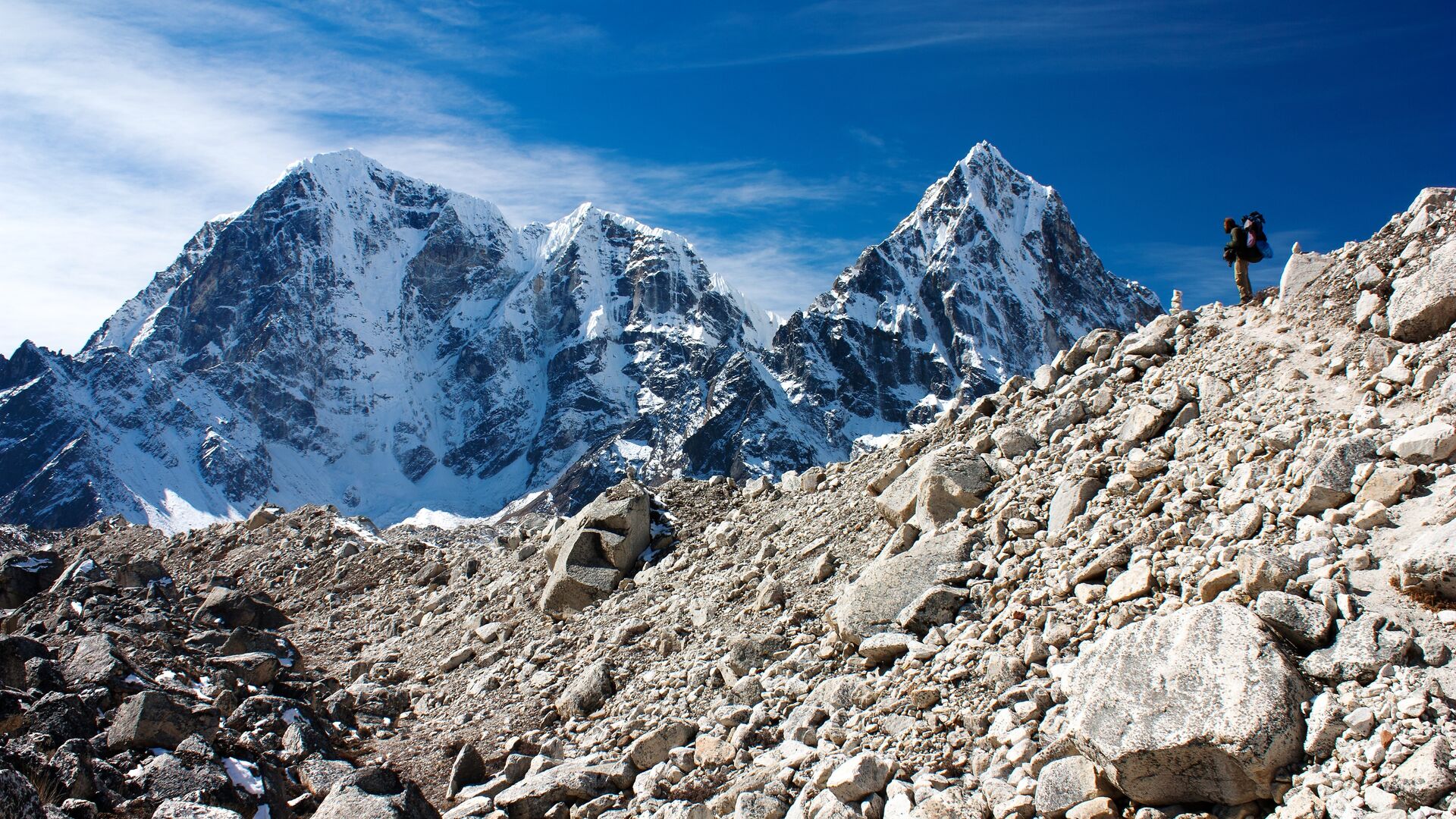
The descent
Among the many unexpected twists in Parbati’s journey, one moment still aches: losing her phone during a fumble shortly after summiting. ‘All the pictures, videos, memories, gone,’ she says. ‘It felt like I’d left a part of my heart on that mountain.’
‘To get the Everest summit certificate, you need photographic evidence. Without my phone, I had nothing,’ she explains. Thankfully, one of the climbers had asked her to take a picture with them. ‘That single photo became my only proof and saved everything.’
After a pitstop at Camp 2 to recover from her journey, Parbati began the final descent with her signature determination, each step carrying her closer to safety. As she crossed the last major hurdle, Crampon Point – a spot where the terrain transitions from snow and ice to rocky ground – she stopped to look back one last time.
‘I stood there silently, took a long, deep breath, and let the entire journey wash over me,’ she recalls. ‘Then I turned and kept walking toward Base Camp.’
‘For many trekkers, EBC is the toughest and final goal. But after summiting Everest, reaching Base Camp felt like finding a sanctuary,’ Parbati laughs. ‘People greeted me with juice and apples. It’s a tradition to celebrate a safe return.’
If you ever decide to see Base Camp yourself, you could be guided by someone like Parbati, not just a leader but a climber who has carried her own dream all the way to the top of the world. To walk with her is to see and feel the mountains with someone who has really lived them.
Parbati says if Everest could be summed up in one phrase, it’s ‘anautho yatra’ (an unusual journey). ‘There was fear. There was beauty. There were moments I thought I’d never return. But I saw the worst and the best of myself. And I kept walking.’
Once you’ve stood on the summit of Everest, perhaps there really is no going back. As Parbati says, maybe you do leave a part of your heart on the mountain and the only way to find it again is to keep climbing. ‘Maybe now, the Seven Summits,’ she says, smiling.
Trek to Everest Base Camp with Intrepid and a pioneering leader like Parbati Joshi.

